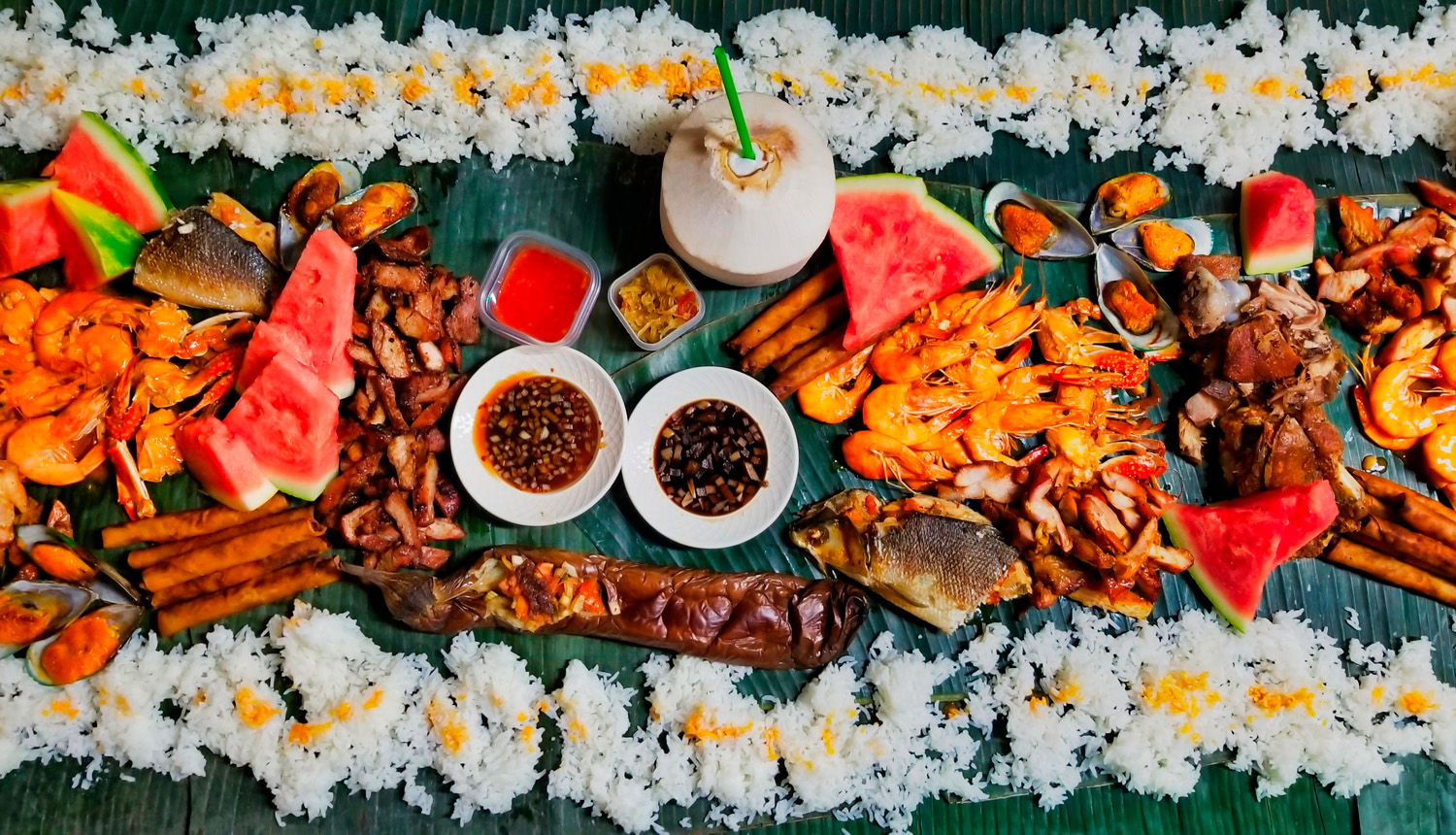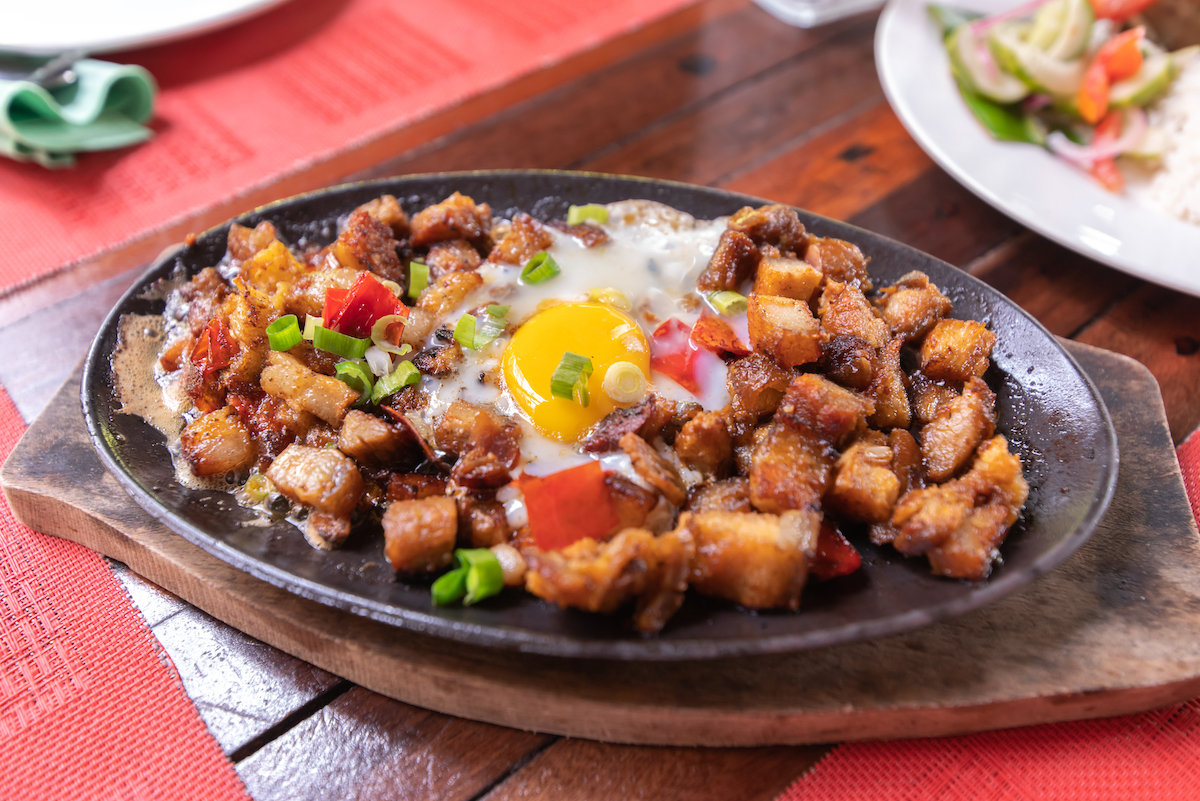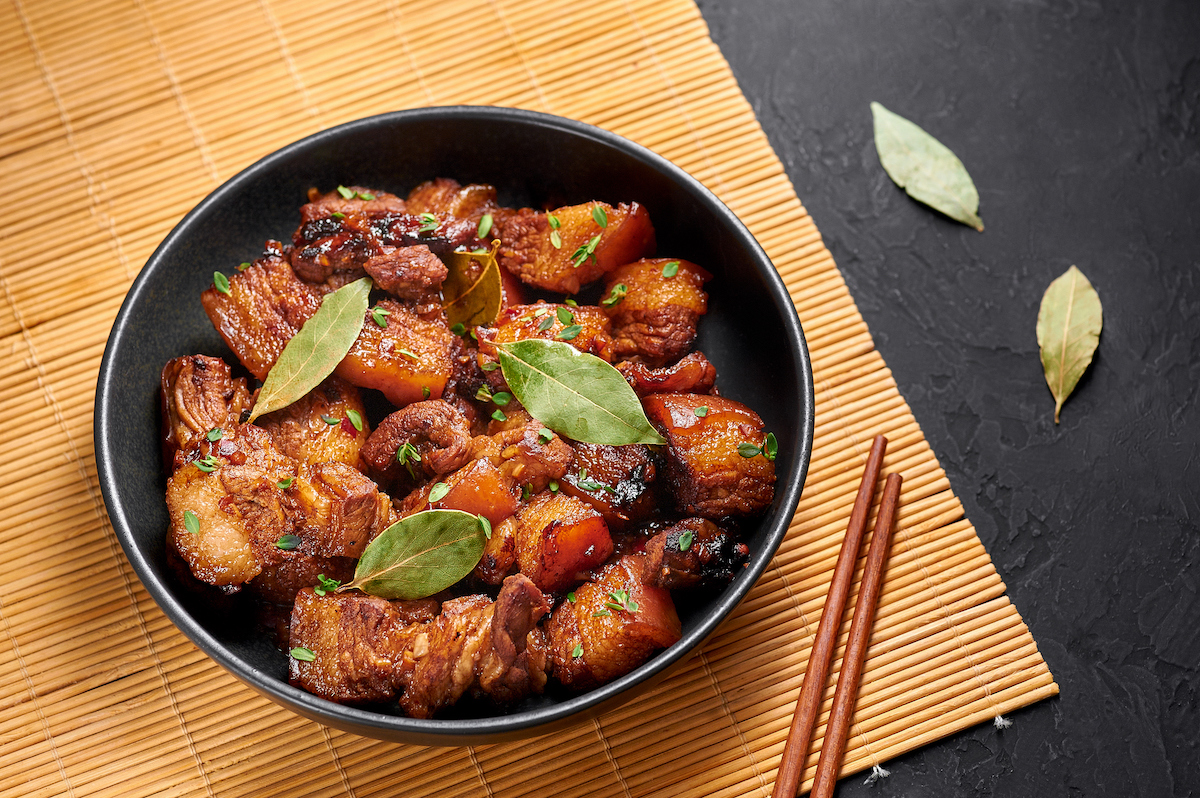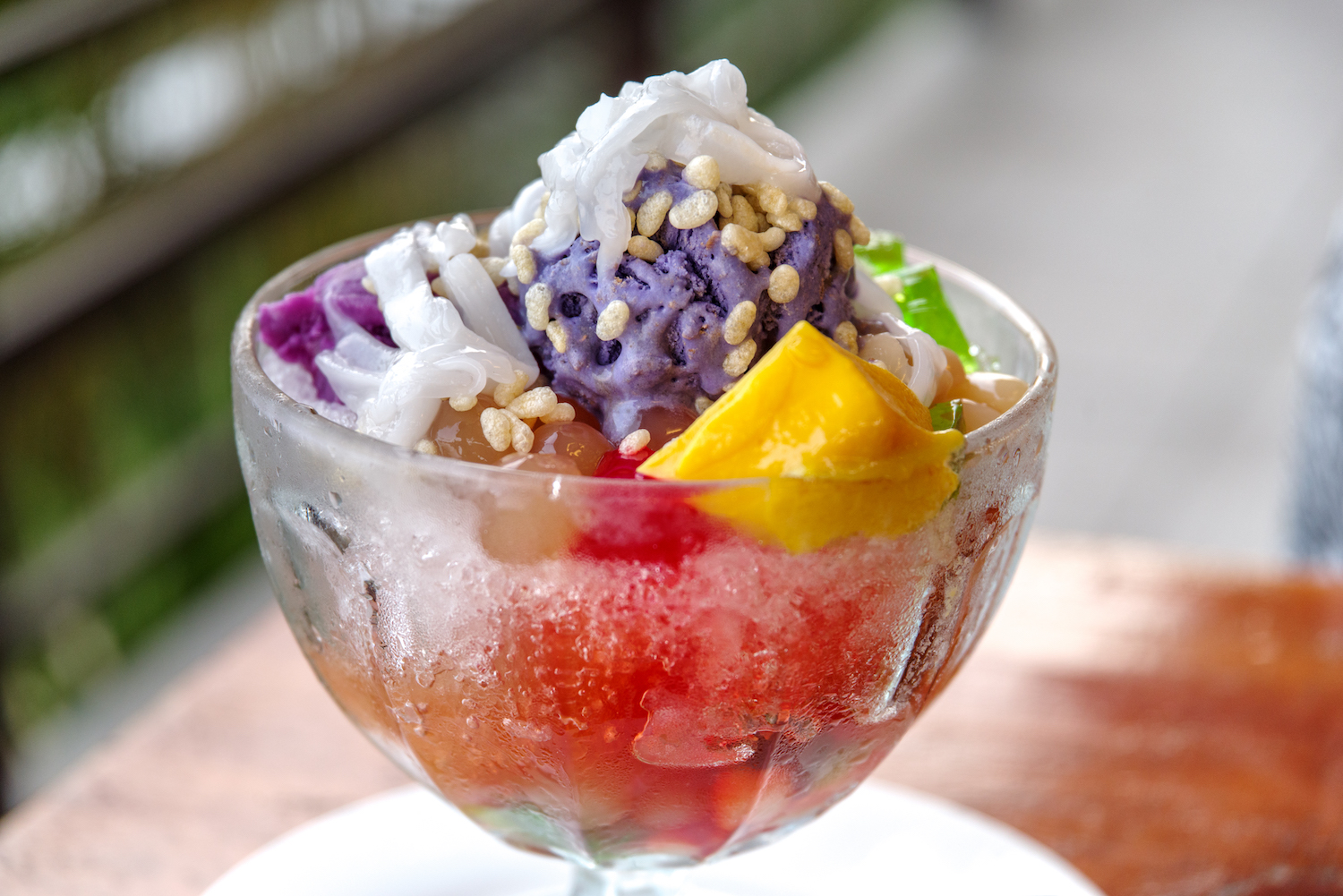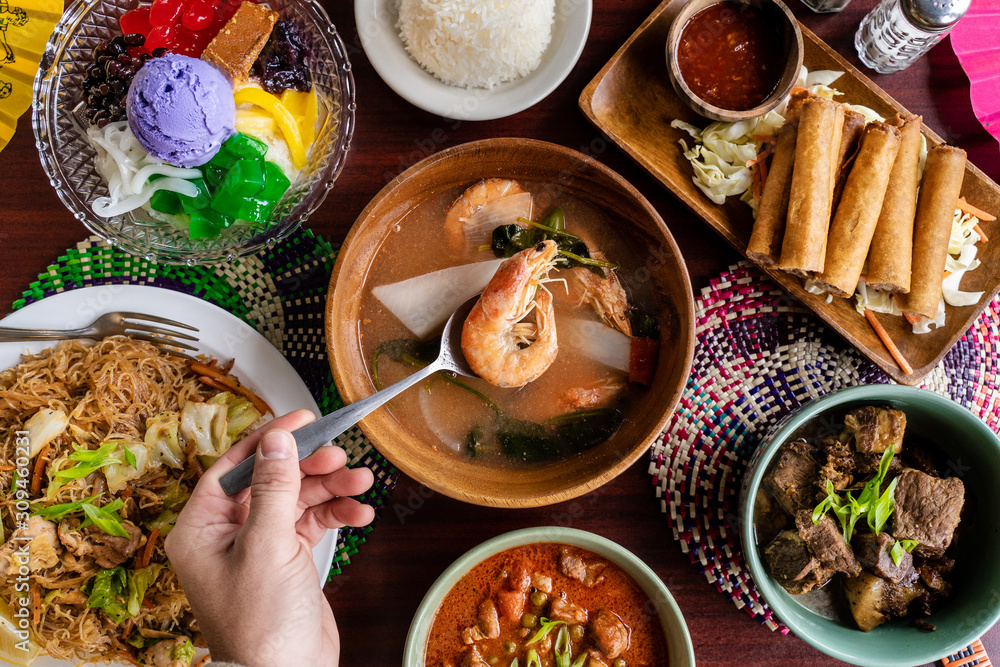3 Popular Filipino Dishes
Get to know sisig, adobo, and halo-halo.
In recent years, both restaurant chefs and home cooks have come to know and celebrate the extraordinary flavors of Philippine cuisine. In 2016, Tom Cunanan’s Washington, D.C. restaurant Bad Saint ranked second in Bon Appetit’s America’s Best New Restaurants. And in 2022, Tim Flores and Genie Kwon’s Chicago restaurant Kasama became the first Michelin-starred Filipino restaurant in the world. They, along with many others, have been championing Filipino cuisine through contemporary, creative spins on culinary classics.
But the heart of Filipino cooking remains in its rustic, homey, comforting, and unpretentious fare. These three dishes highlight the range and depth that the cuisine has to offer.
Sisig
We’ll start this list with an appetizer. Sisig is a starter to a Filipino meal (although in some cases, it’s the main meal itself). Sisig was created as a way to turn unwanted pig heads into a delectable dish. Though the exact origins are debatable, it really took off after Aling Lucing restaurant in Angeles, Pampanga served sisig in the 70s.
Sisig is made from the pig head (namely the snout, cheeks, and ears), belly, and liver. Cooking sisig is a laborious process but results in an unforgettable crispy pork dish. After simmering in water, the parts are chopped into small pieces and then fried in butter and oil. The mixture is then seasoned with calamondin, onions, and chili peppers and served on a sizzling plate. Some garnishes include a raw egg, a drizzle of mayonnaise, crunchy pork rinds, and more red and green chilis. The crunchy texture and luscious buttery flavor of this ingeniously upcycled Philippine dish is a perfect match for a cold beer.
Adobo
No lineup of Philippine cuisine would be complete without the national dish adobo. Adobo is a stewed pork dish predating the arrival of the Spanish in Cebu. The dish involves gently stewing meat in soy sauce, vinegar, bay leaf, and peppercorns until the meat is fork tender. It’s usually served as a main meal or for breakfast: in a panini, or as breakfast si-log (with sinangag, or fried rice, and itlog, or fried egg).
There are many variations of adobo, and regions, restaurants, and even individual households all vie for the title of the “best” adobo. From north to south, adobo varies not only in flavor but in the ingredients used and the cooking techniques applied: there’s adobo sa puti (in plain vinegar, without soy sauce) sa dilaw (turmeric and ginger instead of soy sauce), adobo sa gata (with coconut milk), adobo flakes (cooked adobo is flaked and fried), adobong Intsik (with brown sugar, anise and hard-boiled egg), twice-cooked adobo (adobo that is cooked then fried for the sauce to caramelize), adobong paksiw (more sugar is added and lechon sauce is used), and dry adobo (cooking out the liquid).
The simplicity of making adobo is essential to its popularity. The perfect adobo lies in that delicate balance of soy sauce, vinegar, garlic, and spices. It also can be stored for days without spoiling, and the flavor even improves as it sits.
Halo-Halo
Halo-halo, or “mix–mix,” is a shaved ice dessert consisting of local preserves and jellies doused with milk and topped with more sweets like rice crispies and ice cream. The cold treat is best enjoyed during the summer, but is available year-round.
Ingredients may include palm or coconut gel (locally called nata de coco), sugar palm fruit (locally called kaong), sweetened plantains, cassava, purple yam, sweet potato, jackfruit, red beans, garbanzos, sweet white kidney beans, sweetened macapuno (coconut sport), sweet corn kernels, and fresh fruits like melon, watermelon, mango, kiwi, or strawberry. The milk used for halo-halo is either evaporated milk (to which most people add refined sugar) or sweetened condensed milk. The toppings include ube (purple yam) ice cream, leche flan, toasted pinipig (immature rice grains, or Philippine rice crispies), chocolate or any flavored wafer stick, cornflakes, etc.
Halo-halo is eaten as a snack or dessert. It’s layered in a large bowl or tall glass, the latter paired with a long spoon to skillfully attack the layers of sweets, ice, and toppings. After the sweets are consumed, the ice likely will have melted into a sweetened purple milk liquid packed with all the goodness left in the glass. The only thing left to do is to gulp it. Enjoy!
Find Local Filipino Shefs & Meals
If you’re a lover of authentic street food, order some home-cooked Filipino food from our local community of Shefs — every cook is food safety certified and earns a meaningful income selling their homemade dishes.
- Los Angeles
- San Francisco (Bay Area)
- Chicago
- New York City
- New Jersey
- Seattle
Find your local home-cooked Filipino food today!

